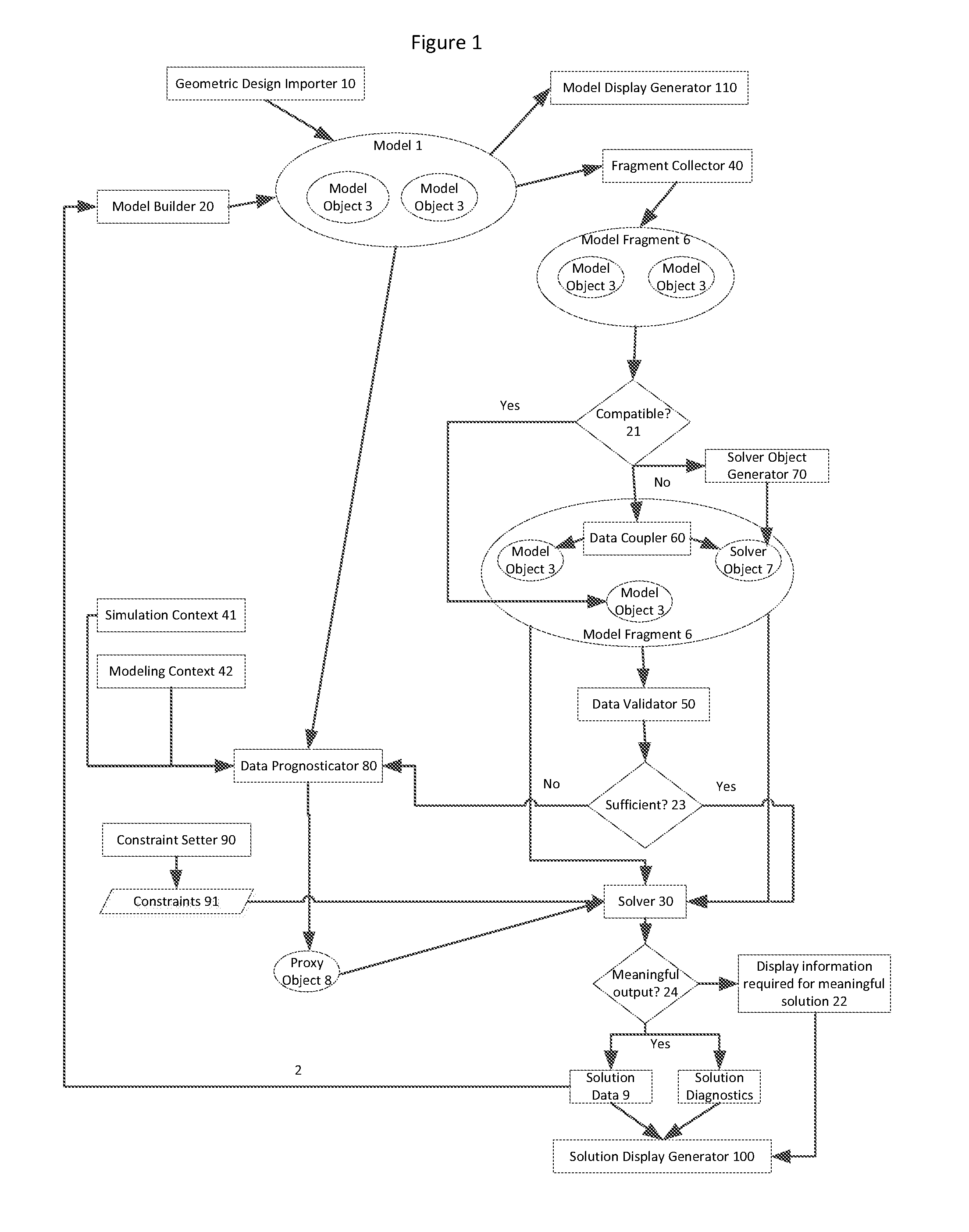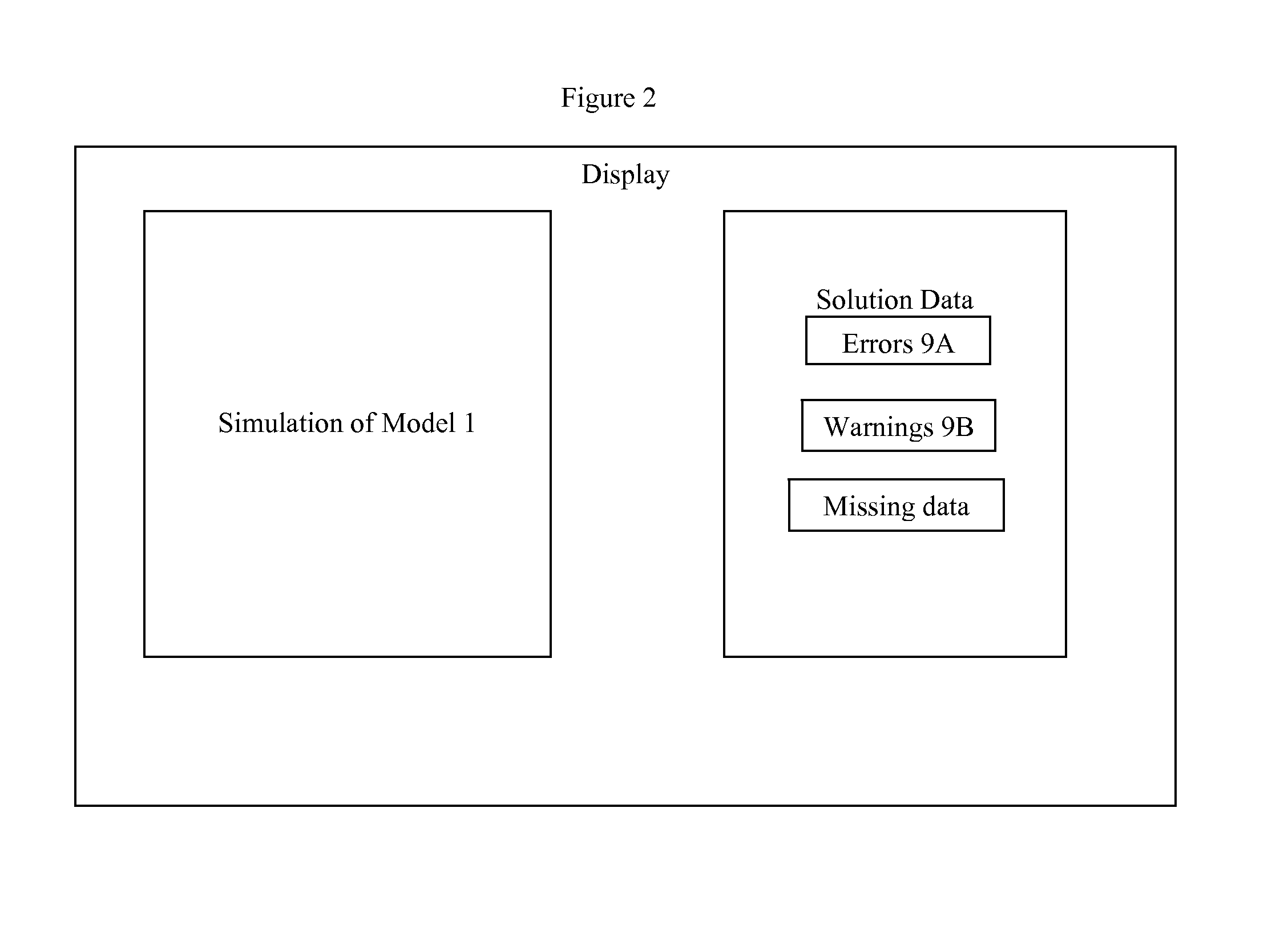Interactive simulation and solver for mechanical, fluid, and electro-mechanical systems
a technology applied in the field of interactivity simulation and solver for mechanical, fluid, and electromechanical systems, can solve the problem that 3 rarely yield a valid simulation
- Summary
- Abstract
- Description
- Claims
- Application Information
AI Technical Summary
Benefits of technology
Problems solved by technology
Method used
Image
Examples
example 1
Interactive Mesh Quality Calculations
[0034]1. Object pattern: an automatically generated mesh. A mesh region is a collection of nodes and elements that are generated using a meshing algorithm. The meshing algorithm is implemented within the mesh generation service. The algorithm is the set of rules, the service is the executable code that implements these rules and transforms the input (geometry, another mesh, etc.) into a mesh.[0035]2. Trigger: Successful completion of a method of the mesh generation service (or mesh generator). This is the method that actually generates the mesh.[0036]3. Solver methods: Those solver methods that calculate the quality metrics for the elements in the mesh. Mesh quality metrics include measurements of the individual element shapes such as taper, skew, Jacobian, warpage etc.[0037]4. Output destination: The element quality data will be returned to the mesh quality container associated with the input mesh.[0038]5. Optional follow on method: Select an in...
example 2
Spot Weld Calculation
[0042]1. Object pattern: A single spot weld object or a pattern / grouping of spot weld objects. A spot weld generator may create the spot weld.[0043]2. Trigger: Successful completion of an interactive method that creates individual spot welds or patterns of multiple spot welds (like a line of spot welds with a given spacing).[0044]3. Solver methods: Solver methods that calculate connectivity of the spot weld to nodes and elements in the Parts that the spot weld joins together. This calculation may create additional modeling objects and constraints usable by the solver to calculate the response of the solver.[0045]4. Output destination: The new modeling objects and diagnostic data will be returned to a container and associated with the original spot weld modeling objects.[0046]5. Option follow on method: Select an interactive method that will cause the previously generated solver objects to be displayed on a graphics display alongside the original spot weld object...
example 3
Computational Part Generation
[0050]1. Object pattern: A Part object containing one or more mesh objects.[0051]2. Trigger: Completion of the generation of a mesh object within a Part object.[0052]3. Solver methods: Solver methods that create a reduced computation part representation from a full fidelity FE Part representation.[0053]Note that there are multiple ways to generate a computational part from a full fidelity part. The choice of computational part generation for any given model will be determined from the simulation and modeling contexts that are current within the session.[0054]Note that the methods required to create a computational part from a full fidelity part require more information than just the mesh definitions referenced in this example. These methods will use all data that is required and available within the model definition and will provide default values for any missing data. The default data values will be provided from the simulation or modeling context defau...
PUM
 Login to View More
Login to View More Abstract
Description
Claims
Application Information
 Login to View More
Login to View More - R&D
- Intellectual Property
- Life Sciences
- Materials
- Tech Scout
- Unparalleled Data Quality
- Higher Quality Content
- 60% Fewer Hallucinations
Browse by: Latest US Patents, China's latest patents, Technical Efficacy Thesaurus, Application Domain, Technology Topic, Popular Technical Reports.
© 2025 PatSnap. All rights reserved.Legal|Privacy policy|Modern Slavery Act Transparency Statement|Sitemap|About US| Contact US: help@patsnap.com



